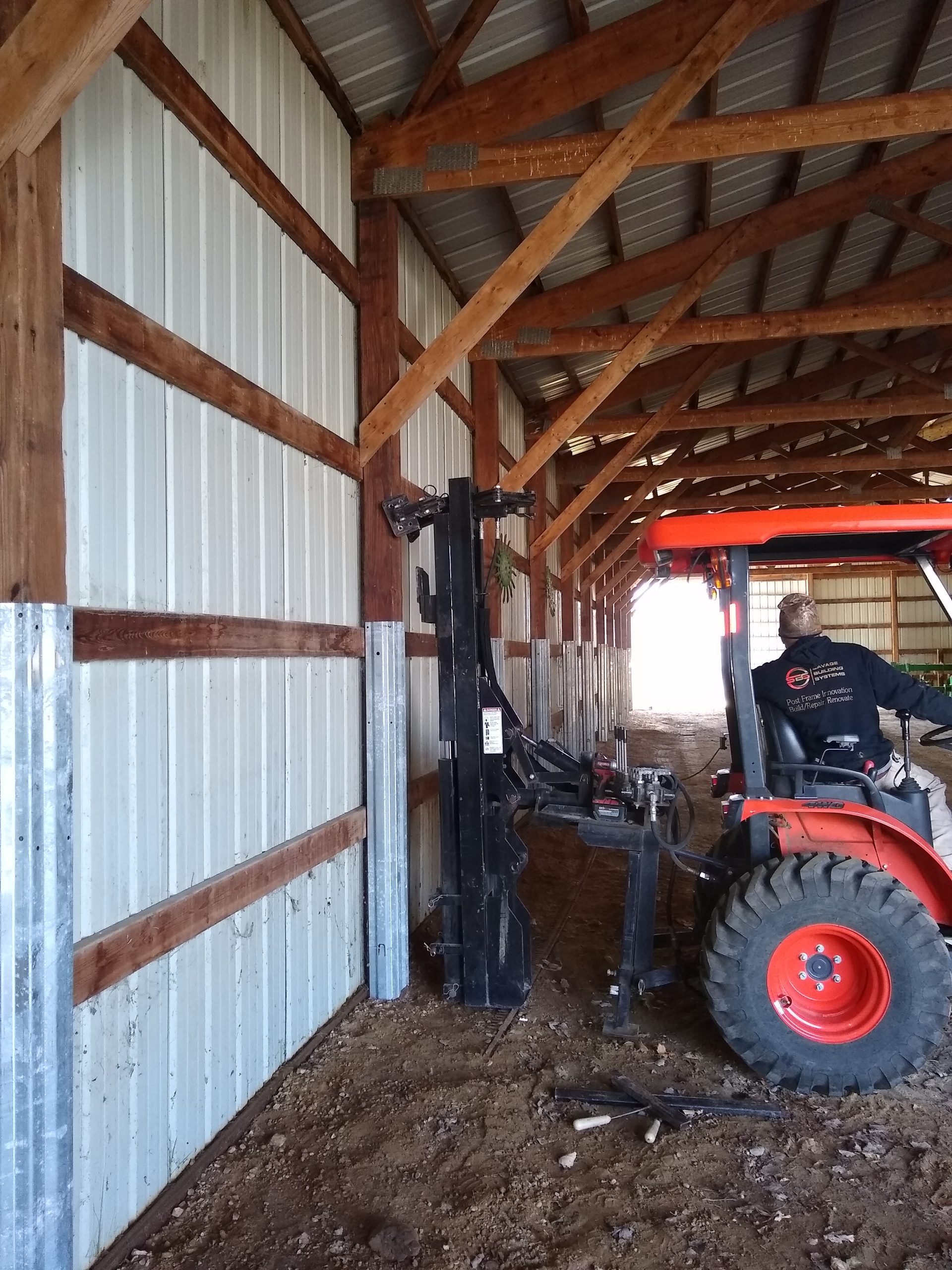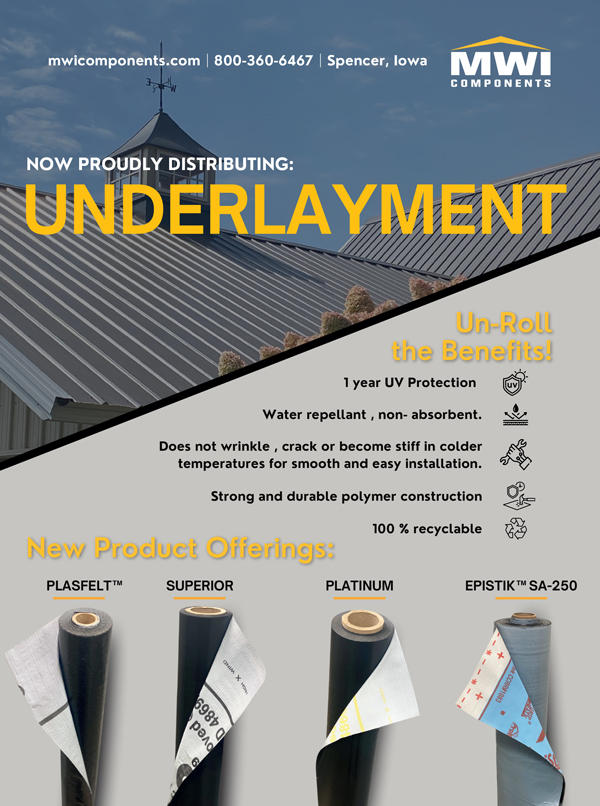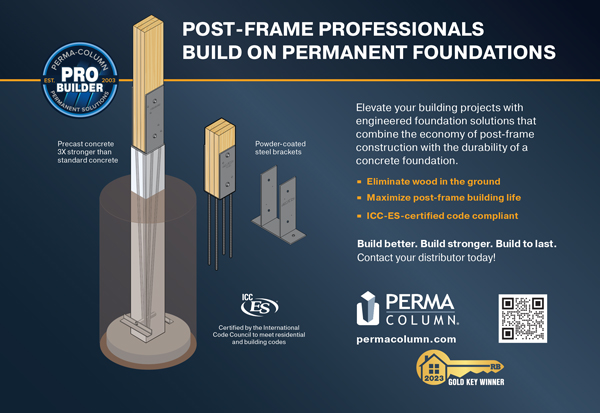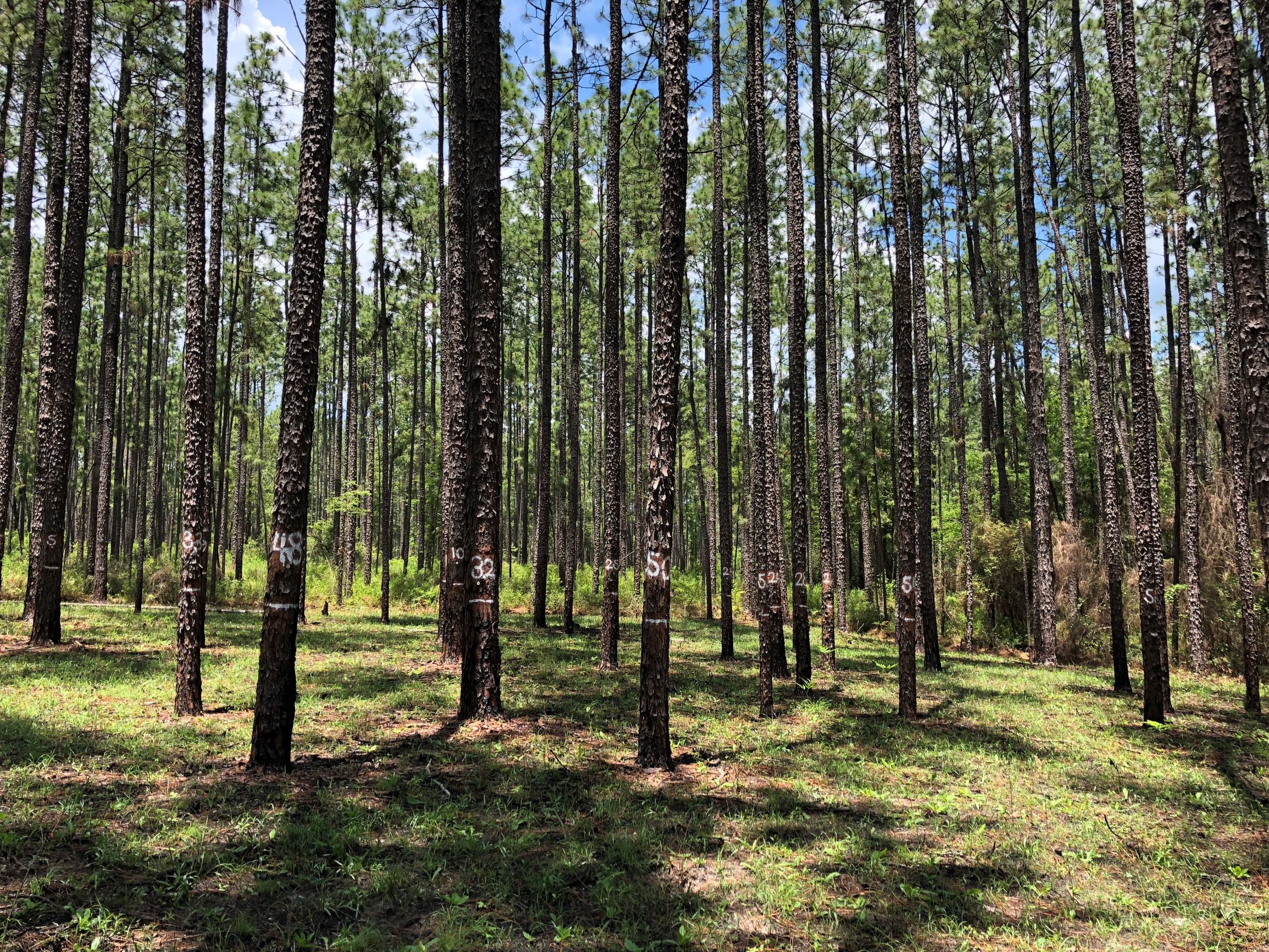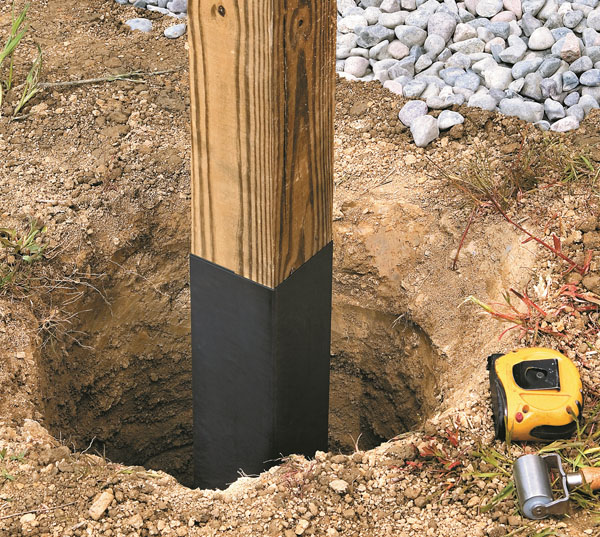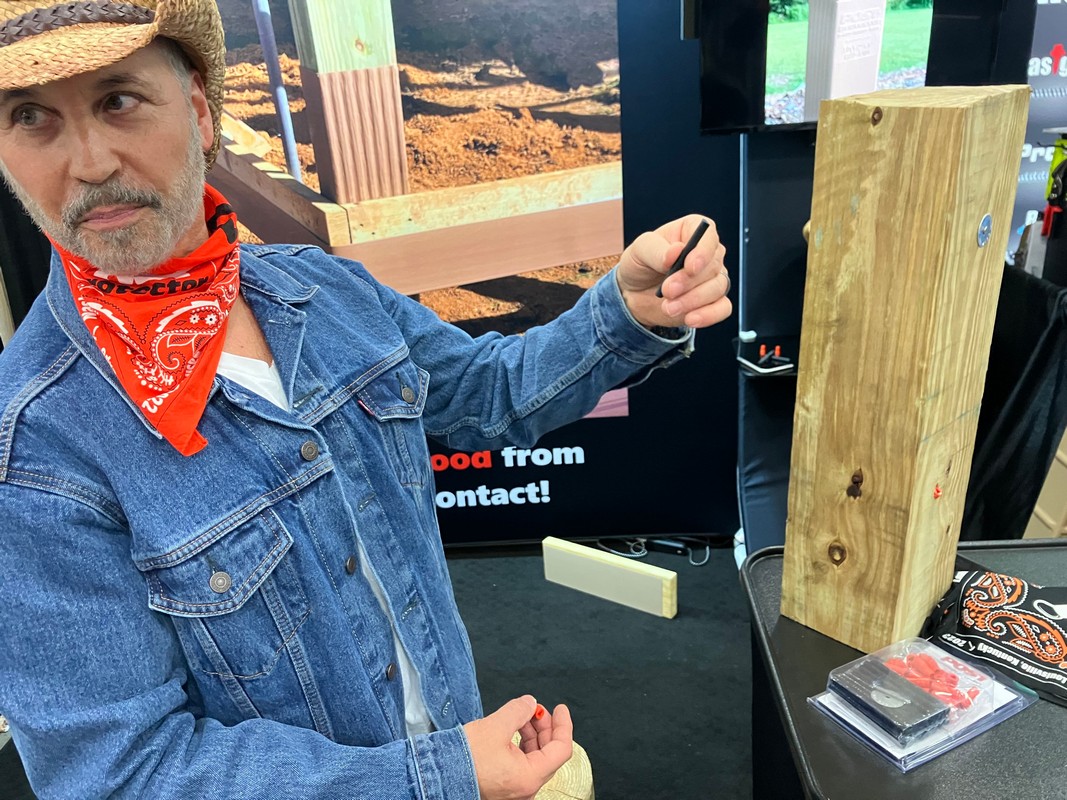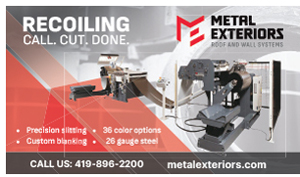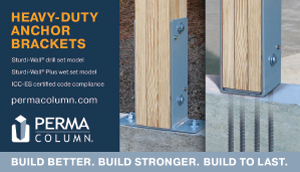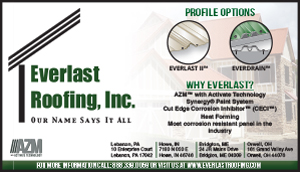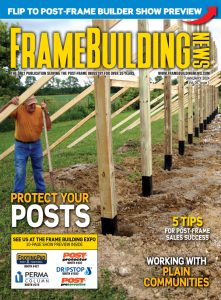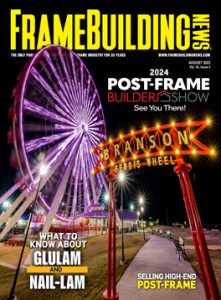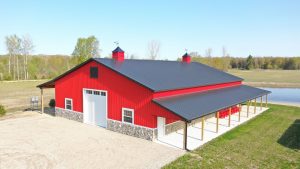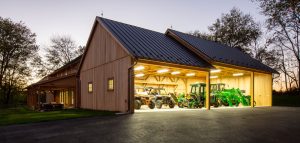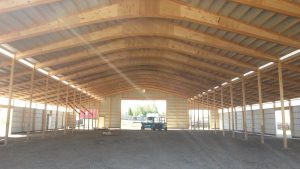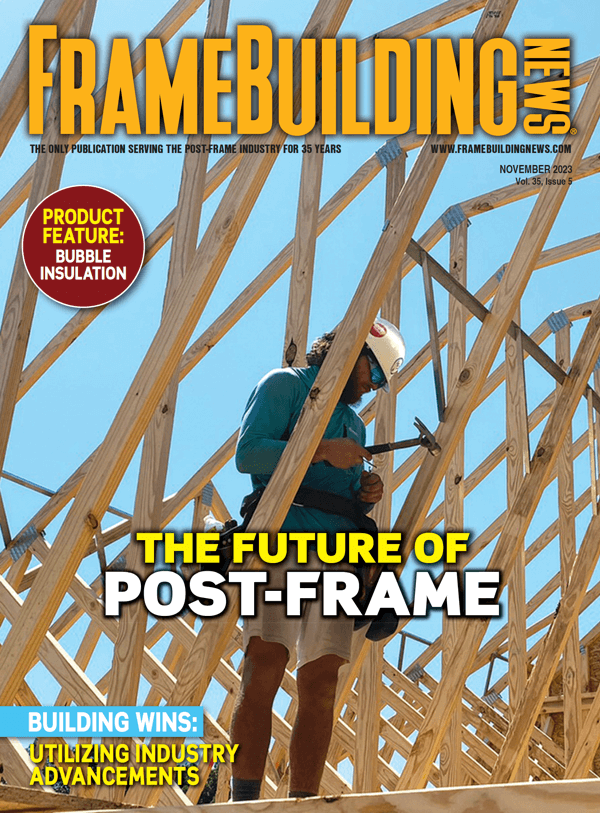By Anthony Brass
Post-frame buildings face much throughout their lifespan, including the elements, temperature swings, animal and machinery containment, and the conditions that increase potential for rot in the posts. When meeting with a customer, oftentimes they know the extent of the rot in these critical components of the structure.
After determining or confirming the degree of the problem or how many posts need tending to, find out which option is best and if they want to replace all the posts or only portions of those affected. The decision comes down to finding long-term solutions to rotting issues; the goal is to improve a structure so it lasts longer.
Wood is subject to rotting over time, whether it’s treated or untreated. “Over time, all wood in the ground is going to fail,” says President of Perma-Column, Mark Stover. “Treated wood doesn’t make it last indefinitely.”
The post is most susceptible below grade. The portion below ground is where the mixture of air, water and bacteria affect the post, and ultimately causes rot. This rot travels as far up as the moisture goes, Stover says. “It’s not the whole post; the rotted portion may only be 2 feet.” Post-frame is designed to put wood in the ground, but potential post rot issues aren’t prevalent in every case. “Every building’s different; every location’s different,” Stover adds.
If you can’t see the rot and there still are fears, it’s in wood below ground and could be traveling up the post. Take a pencil or screwdriver into the post to see how easily it goes in. If it’s rotted there won’t be much resistance, and requires action to save it. “The structural integrity of the building needs to be addressed,” says Stover. Posts that lunge forward easily when pushed may be another sign of rot. Or, the skirt board may be soft.

Older post-frame structures should be inspected on an annual basis. “The older the building is, the more inspections you’ve got to make,” Stover cautions. He adds all with post-frame owners should be vigilant about the foundation’s condition. “Everybody who’s got wood in the ground should be checking their posts. If you’ve got one rotted post, you probably have more than one,” Stover says, adding you’ll likely have to replace and repair it instead of taking the risk of waiting.
The potential for post rot increases based on the combination of the soil, air, moisture and other conditions. Stover says it also depends on the location of the building. “If you’re in a low-lying area you’re going to have issues. It depends on the water table and the soil conditions.”
Co-owner and Manager of Business Development of Meyer Building, Matthew Gerber, says another sign of potential rot is a noticeable sagging in the eaves and gutters. Other locations give a telltale sign. “The edge of the outside of the building gets a little ‘spongy’ if you push against it,” Gerber says. Other signs include a post that is “necking” or narrowing, or is flaking.
One overlooked factor is the trend where wood posts are sourced. Today’s treated wood lumber companies are making posts out of younger trees from sustainable sources. Wood density in these trees is less than those that are older and grown in the past, Stover says. These newer trees grow faster and are harvested earlier so the density isn’t the same, leaving them more susceptible to rot. The wood from younger trees is not as tight, potentially affecting the strength and long-term viability of the lumber. “Wood is not the same as it was in the past,” Stover says.
Post Solutions and Options

Owners must decide whether to solve their post rot issues permanently or for a long-term period. Their budget, product preference, and how long they desire to prolong their post-frame building determine their ultimate decision.
One option is to replace the entire rotted post. Dig down to where the rot is in the wood and cut the rot out. Place in long, precast concrete posts into the ground, substituting the wood for a permanent solution. The wood is elevated above ground; no part of the post is underground to succumb to rot. Steel-reinforcing rebar in the concrete is robotically welded to a ¼” steel powder-coated bracket that encases wood above the ground. Concrete is then poured around the precast concrete column and up to ground level. “You’re building a concrete-pier system that you’re pouring at the field level. You’re eliminating any issues with wood,” Stover says. Each affected pole can be treated this way, or all can be replaced at once.

The other option is to repair an area on a single post that’s rotted out. Dig down to the area on the post where it’s affected and cut out only the rotted portion. A ¼” steel bracket is bolted to the unaffected, solid section of the wood. The concrete is then poured into the area down around the post and up to the bottom of the bracket. “The steel brackets are powder-coated and designed to resist corrosion and weather,” says Stover. Anchor brackets with rebar are inserted into wet concrete or into an existing concrete foundation that has already been poured and cured. These can go into a concrete footer or on a floating slab.
Wear Sleeves
When clients want a solution but have a budget, placing a steel sleeve over the rotted post is a viable solution to strengthen a weakened foundation. Repair sleeves provide a long-lasting base for a post-frame building. These reinforce and stabilize existing wood columns that have deteriorated from rot, separating the column from the soil to prevent further decay. But not all are created equal.
These high-strength sleeves are made from 10-gauge galvanized steel (G165). These include 14 corrugated bends for durability to significantly increase the life of the post column. These sleeves are also practical, as they are inserted into the ground around a column, and don’t include any digging. “The corrugated bends gives us an anchor point to push it in,” says Steve Beach, owner of Savage Building Systems. They use custom hydraulic drivers to push these sleeves into the ground around the rotted post.
The sleeves are fastened to the post above grade with 12 engineered lag bolts each with a 5,000-lb shear rating (grade 5). These are designed with built-in uplift anchors to use the building’s uplift components to solidify its foundation. The shear point is where the column meets the ground. This point is where the load of the building is transferred into the ground. A sleeve changes a shear point from “grade” to 2’ “above grade” for reinforced strength, extending the life of a post-frame structure.
Beach further recommends using sleeves, reiterating these work in conjunction with the building. “We’re able to utilize the building’s original uplift and foundation components.”
‘Posting’ Further Information
Beach says they work on many older wooden farm structures to save them. Savage Building Systems also corrects any settlement issues many buildings face because of rotting posts. They use a laser to quickly detect and confirm any settlement problems due to rotting inside. “A lot of these buildings that have decay have settlement issues,” Beach cautions.
He adds you should check the doors. When a building has rot issues that compromises its settlement, he says the doors may not open correctly, further indicating a problem. Beach says in many instances the owners don’t know the building is suffering from post rot. He says a windstorm comes along, and blows a portion of the wall in. Or, they go to open the doors and decay has settled in, preventing doors from opening. He adds many of these clients are looking for quick fix that provides a long-term answer.
Beach recommends carrying your products with you to present to a client before a decision. In addition, he shows a video how these work, if the client hasn’t already seen them online.
After any presentation – and it’s clear that some posts are still strong while others are compromised from rot – the customer has to make a decision.

“It’s based on economics at that time,” Gerber says. He recommends going over the prices for each option with them. Afterward, Gerber says the customers should ask themselves if they want to save their building by repairing, preserving or replacing the posts.
The location of where your work begins plays a factor. Gerber says the posts are accessible from the exterior of the building. The work starts by pulling back the steel wall of the structure or loosening it from the outside to access the base of the post. It’s important to ask your client questions first about the surroundings before repairing or replacing posts from the outside. Ask how they are using the building and if there’s equipment, shop benches or shelving or other heavy obstructions near the rotted posts, Gerber says. He says to let the customer know you can access the posts from the outside so they don’t have to move these items. But inform them there’s additional cost to work from the outside and peel away metal or pull it up to access the ground and rotted post.
Conclusion
Many builders focus on new construction for clients, which solves rotting issues. Some post-frame owners are simply looking to maintain their current structure and prolong its use. Probe each customer to find what they want and decide on the best course of action.
Give options with what’s proven to work. Stand behind your products, and work that preserve their building. Gerber says, “Give the customer confidence that this is going to work.” FBN


